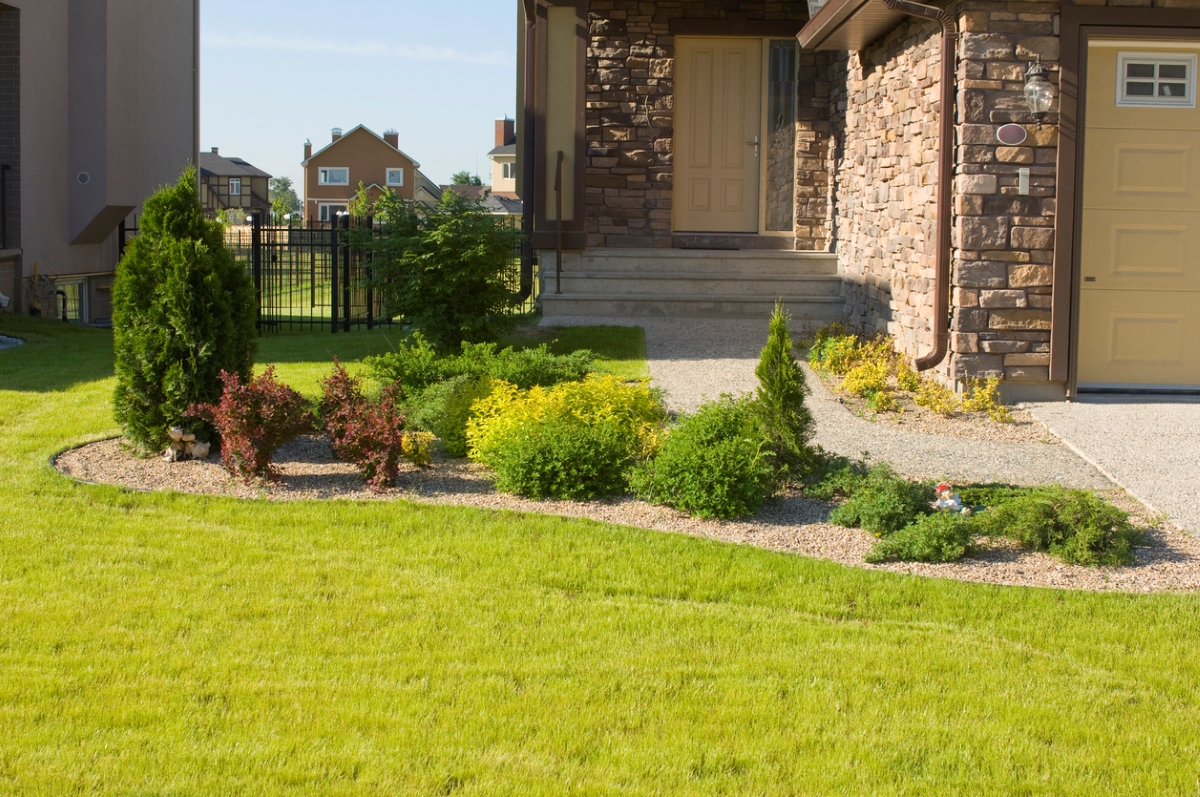We may earn revenue from the products available on this page and participate in affiliate programs. Learn More ›
Some people love gardens but hate gardening, and that’s totally OK. There, we said it. We know some plant lovers who find weeding, feeding, and watering meditative, and others who find nothing zen about garden pest eradication and not being able to scrub the dirt out from under their fingernails. Here’s our cheat sheet for you “wake me when it’s time to harvest” folks: You can have a blooming bed without busting your hump.
1. Install a water timer.

You don’t need a live-in gardener to make sure your yard gets watered regularly. Instead, you can schedule your lawn or garden watering using a hose timer, a gadget that attaches to your hose bib. It works in the same way that smart timers indoors work: You program it to turn off and on at preset times; many models, including the Orbit single-outlet hose timer, even have a rain delay setting that allows you to skip waterings when the weather is inclement. These gadgets start at about $30, but pricier models allow you to control the settings via an app on your smartphone.
RELATED: 30 Water-Saving Habits to Start Right Now
2. Set up a drip irrigation system.

There are a few different types of drip irrigation systems, including sprinklers and misters, but the one that’s probably most useful for those with a big patch of ground (or a bunch of raised beds) to water is the kind with thin, perforated tubing that you can lay on top of your raised bed’s soil. Water slowly seeps through the holes to deliver ample moisture to your plants. Couple a drip irrigation system like the Raindrip Drip Watering Vegetable Garden Kit with a hose timer, and your watering routine will pretty much do its own thing.
RELATED: Our Favorite Drip Irrigation System is Shockingly Easy to Set Up
3. Select self-cleaning flower varieties.

You’ve heard of self-cleaning ovens, but self-cleaning plants? These varieties boast blooms that naturally fade and fall off, meaning there’s no need to deadhead or prune away withered flowers. Varieties of geranium, begonia, columbine, and baptisia are just a few examples of self-cleaners that will always look fresh, without your having to do a thing.
RELATED: 25 No-Effort Plants for a Foolproof Landscape
4. Spread some mulch.

Mulching garden beds retains moisture and prevents weed growth, and will allow you to spend less time watering and weeding and more time relaxing. Buy bags of mulch at the local garden center, pick some up from your municipality, or make your own mulch using materials gathered from your own backyard.
RELATED: How Much Mulch Do I Need?
5. Lay a weed barrier.

By laying down sheets of newspaper or landscape fabric before mulching your garden, you can drastically reduce the number of weeds that poke through your beds. Newspaper will eventually break down into the soil, so you’ll need to replace it as it decomposes to keep weeds at bay. Landscape fabric is a longer-lasting, though more expensive, option.
RELATED: The Best Landscape Fabrics for Weed-Free Gardening
6. Use Watering Globes

Potted plants dry out more quickly than those in the ground, making near-constant watering for those with patio plants a fact of life. Watering globes, like these Besti self-watering globes, can give you some time away from your watering duties. These clever contrivances gradually deliver water to container plants for up to 2 weeks. Frugal gardeners can make their own automatic plant waterers by repurposing a soda or wine bottle. Your thirsty plants will thank you!
RELATED: 14 Ways to Help Your Garden Survive a Heat Wave
7. Opt for drought-tolerant plants.

If you want to be able to neglect your landscaping during busy summer days, choose your plants carefully. Check each plant’s water requirements before you buy to ensure you’re planting a garden you can sustain. Drought-tolerant plants don’t really need to be watered much once they’re established, so they’re easier and cheaper to maintain in the long run. Some of our favorite options include black-eyed Susan, hollyhock, and sedum.
RELATED: The Best Low-Maintenance Ground Cover Plants for Your Property
8. Mix in moisture-retaining amendments.

For plants that do require regular watering, add a moisture-retaining material like vermiculite or perlite to the soil before you plant seeds and seedlings. This simple step will help tender plants go longer between waterings without wilting in the heat.
RELATED: How Soil Amendments Can Improve Your Garden
9. Choose slow-growing shrubs.

The secret to keeping your front yard foliage looking tidy without constant attention? Slow-growing shrubs require less frequent pruning than faster-growing varieties do. Not only are these shrubs less work to maintain, but you can enjoy them for years without worrying that they’ll outgrow your garden.

